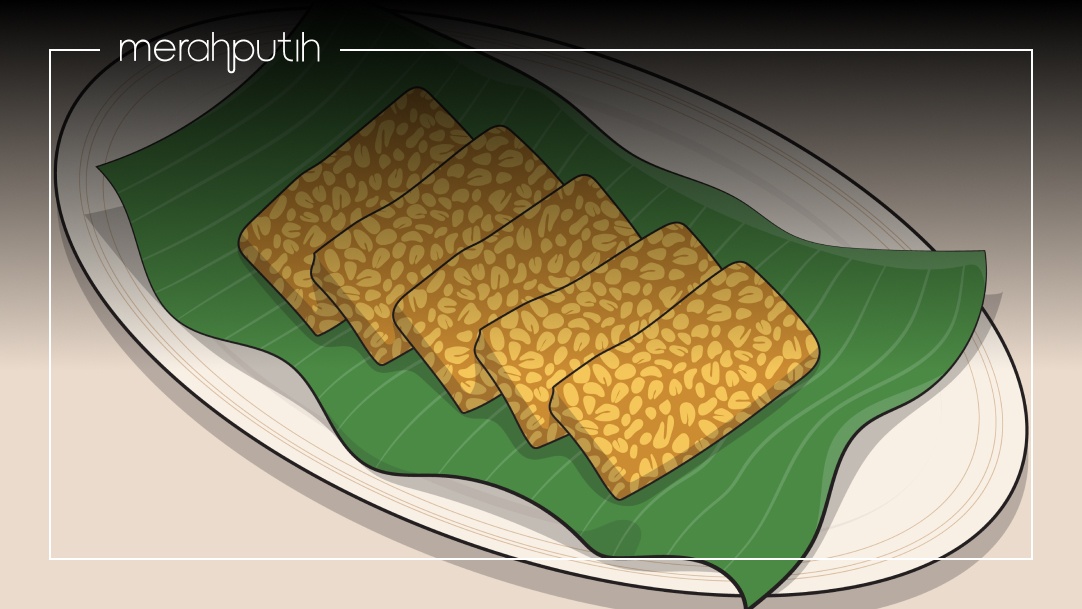Tempeh (or tempe in Bahasa Indonesia) has long been a part of Indonesian culture and cuisine, serving as an affordable and accessible protein option. A 2023 research has shown that the average daily consumption of tempeh in Indonesia is 41.75 grams per capita per day, highlighting just how popular this superfood is in households across the country. Its high nutritional value and versatility have made it a beloved ingredient for centuries.
What is tempeh and what is it used for?
Classified as a superfood packed dense with nutrients, tempeh is a fermented soybean cake originating from Indonesia. It’s a source of high protein and fibre, making it an excellent snack or side dish. In recent years, tempeh has become a popular meat replacement in vegetarian and vegan dishes.
Common ways to cook tempeh include frying, deep frying in batter, steaming, grilling, or simmering.
Related article: Getting to Know Indonesian Food Culture
A history of tempeh
Tempeh found its beginnings in Central Java, where the first written record of its existence appeared in a 19th century literary court poem called Serat Centhini. The poem included mentions of tempeh being cooked in coconut milk and another instance where tempeh was served with grated coconut.
Around the same time, the influx of foreign traders to Indonesia brought tempeh to an international audience. Tempeh first appeared in Europe in a German article about soy food in 1896, after which popularity grew.
The tempeh industry boom in the 1980s took over Indonesian commerce. By 1983, there was around 1 million pounds of tempeh produced in the country for commercial purposes. Today, Indonesia exports tempeh by the tonnes, with one company called Cucup even exporting 40 to 50 tonnes of tempeh a month.
How is tempeh made?
Tempeh is formed by first soaking soybeans in water. Once the outer skins flake off, they are removed, and the beans are cooked until tender. They are then drained and cooled to room temperature.
Next comes the fermentation process. A culture or mold is added to the cooled soybeans, which are then portioned and wrapped in banana leaves. These are left to incubate at around 30 to 32 degrees Celcius.
The added mold grows during the incubation process. It acts as a binding agent for the beans, making them stick together to form a cake in each banana leaf, which are then stored in the fridge.
Health benefits of tempeh
Tempeh is the only plant-based source that contains vitamin B12, a vitamin which is normally found in animal-based products. Consuming this fermented soybean cake comes with a wide range of health benefits. In fact, 100 grams of tempeh includes roughly the following, among many others:
- Protein: 20.8g
- Calories: 201cal
- Fiber: 1.4g
- Potassium: 234mg
- Iron: 4mg
- Fat: 8.8g
Because of these nutrients, moderate tempeh intake can help with the following.
Improves digestion
The fermentation process in making tempeh produces probiotics, which helps maintain the balance of microbiota in the gut.
Lowers cholesterol levels
A 2023 research has shown that regular consumption of 25 grams of tempeh over a six-week period has successfully reduced cholesterol levels in patients with hypercholesterolemia. By default, contained levels of cholesterol also prevents heart issues.
Lowers blood pressure
Tempeh’s potassium content helps the body eliminate excess salt. Potassium is also known to relax the walls of blood vessels. Both contribute to lower blood pressure.
Prevents cancer
The bioactive peptides and isoflavones in tempeh can help prevent cancer, particularly by inhibiting the growth of hormone-related cancer cells.
Popular Indonesian tempeh dishes
Over the centuries, Indonesians have perfected many dishes that star tempeh, including:
Tempe goreng
Tempeh is most commonly cooked this way. It is sliced and then covered in spices like garlic, salt, turmeric, and coriander, then deep friend until golden brown. This form of tempeh can be enjoyed as both a side dish and a snack, and you will find it sold by many streetside vendors.
Tempe mendoan
This Javanese recipe involves slicing the tempeh thinly, throwing them in a batter, and then deep-frying only until the batter is half-cooked. Tempe mendoan is a beloved snack, known for its flimsy structure, served with sweet soy sauce and chopped chillies.
Tempe orek
Tempeh is also commonly turned into a side dish. With tempe orek, the tempeh is cut into cubes and then stir-fried in sweet soy sauce with a blend of garlic, shallots, and sometimes chilli.
Tempeh at Merah Putih Restaurant
Tempeh makes several appearances on the menu at Merah Putih Restaurant. Indulge in these dishes to get a taste of just how versatile and flavourful tempeh can be.
Sate tempe
If you want to experience tempeh as the star of the show, sate tempe is a skewer of chargrilled tempeh, capsicum, and leek, served with peanut sauce, soy sauce, and chilli.
Nasi campur sayur pecel
Tempeh is also featured in the signature vegetarian nasi campur. Chargrilled tempeh is served on the side of pecel, an Indonesian salad containing beansprouts, long beans, white cabbage, and spinach with a peanut sauce dressing.
Kare sayur
You will find tempeh cubes in this delicious and hearty vegetable curry, along with tofu, baby carrots, potatoes, and zucchini.
For a taste of any of the above tempeh dishes, book a table at Merah Putih Restaurant today. This luxury restaurant serves unique twists on locally loved Indonesian food as well as signature Balinese dishes. Don’t miss out on these exclusive gift vouchers for a special price on your visit.
FAQ
Tempeh is a superfood from Indonesia made of soy beans fermented in a culture or mold, which binds the beans together to form a soybean cake.
While most popular in Indonesia, tempeh is now present in dishes around the world from Malaysia, Singapore, and even the United States.
Tempeh first originated in Central Java. The first written record of its existence appeared in a 19th century literary court poem called Serat Centhini. The poem included mentions of tempeh being cooked in coconut milk and another instance where tempeh was served with grated coconut.
Common ways to cook tempeh include frying, deep frying in batter, steaming, grilling, or simmering.



